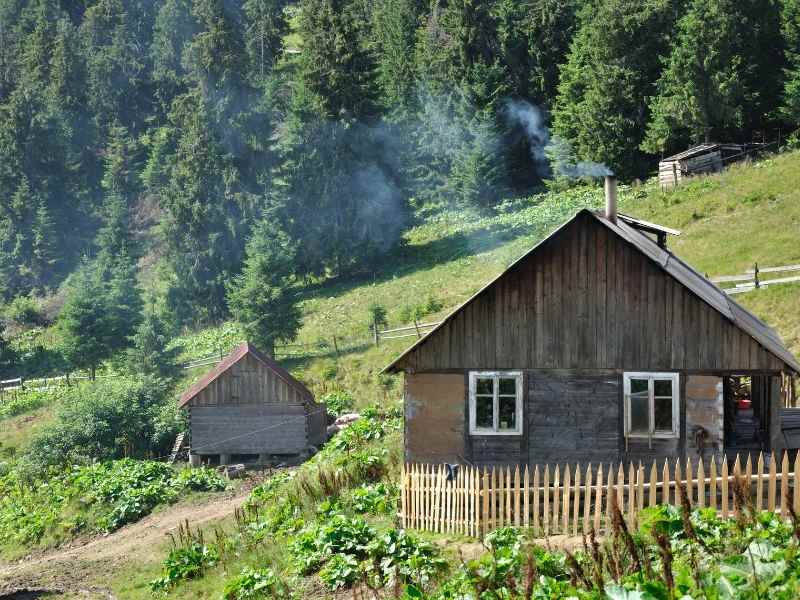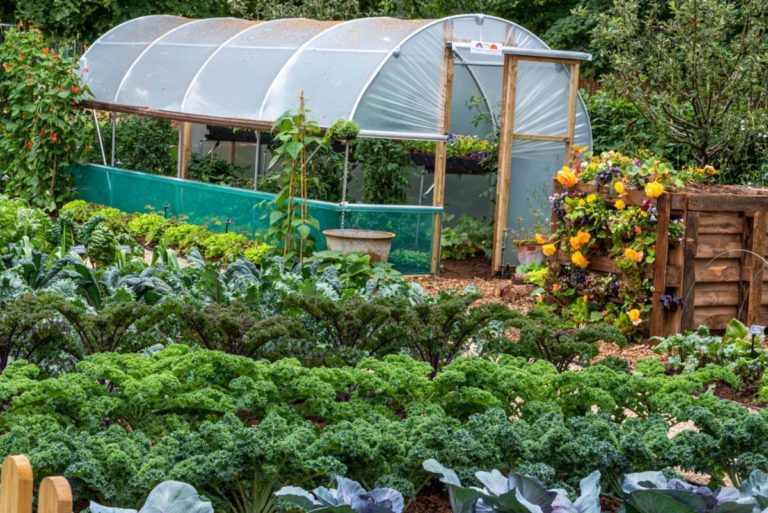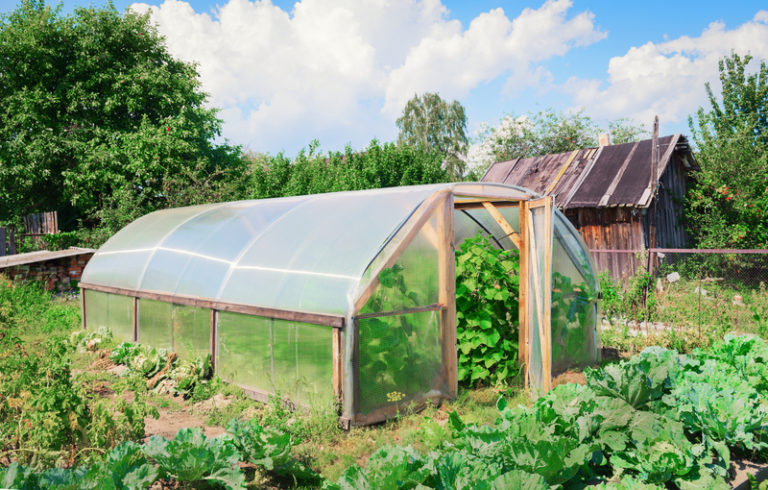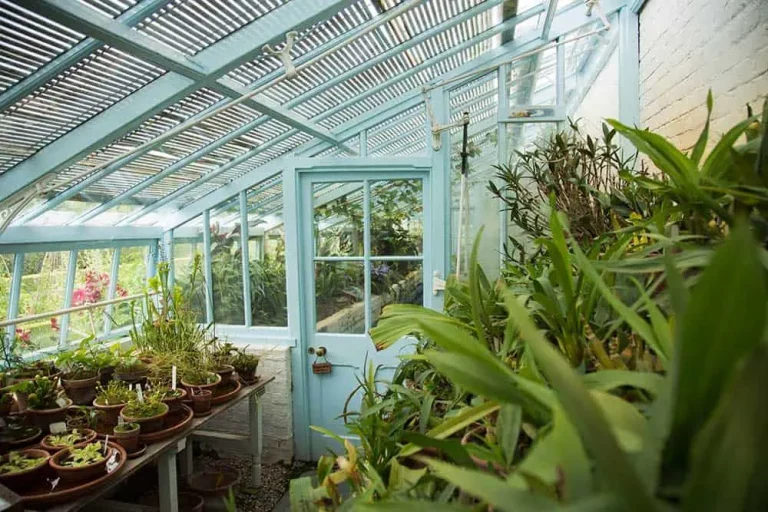Are you ready to start living off the grid and producing your own food?
Do you dream of a self-sufficient homestead that is both sustainable and profitable?
If so, then Off-Grid Permaculture for Beginners is just what you need.
In this comprehensive guide, we’ll show you how to start a small-scale homestead using maximum yield permaculture principles and thrive without reliance on external resources.
You’ll learn everything from site selection and planning, to soil preparation and irrigation, as well as tips for selecting the right crops and animals for your unique climate and region.
Our expert authors will walk you through every step of the process, offering practical advice and actionable strategies that can help make your off-grid homestead dream a reality.
So let’s get started today!
Start small
Begin with a small, manageable plot of land (1/4 acre or less) to gain experience and build confidence before expanding to a larger scale.
This can be as small as 1/4 acre or even just a few square feet, depending on your resources and goals.
By starting small, you can gain valuable experience and build confidence in your abilities without feeling overwhelmed or overburdened.
This will allow you to experiment with different techniques, learn from your mistakes, and refine your strategies over time.
Starting small can help you develop a stronger connection with your land and the local ecosystem, as you’ll have more opportunities to observe and interact with the natural world around you.
As you gain experience and confidence, you can gradually expand your plot and incorporate more advanced permaculture techniques, such as aquaponics, beekeeping, or composting.
But no matter how large or small your plot may be, the fundamental principles of off-grid permaculture remain the same: to create a sustainable, self-sufficient ecosystem that works in harmony with nature.
Observe and learn
Spend time observing the natural world around you, noticing patterns and relationships between plants, animals, and the environment. This will help you design a permaculture system that mimics these natural patterns.
Observing the natural world is an essential step in designing an off-grid permaculture system.
By paying close attention to the patterns and relationships between plants, animals, and the environment, you can create a system that mimics these natural patterns, leading to a more resilient and sustainable design.
For example, observe the relationships between different plant species, such as how certain plants attract beneficial insects or improve soil health.
Notice the ways in which animals interact with their environment, such as how they use natural structures for shelter and forage for food.
Pay attention to the local climate and weather patterns, which will help you determine the best plants and animals to include in your system, as well as the most effective ways to capture and store water and manage waste.
By carefully observing the natural world, you can create a permaculture system that is not only functional and productive but also beautiful and in harmony with the surrounding environment.
Use perennial crops
Plant perennial crops such as fruit trees, nut trees, berry bushes, and asparagus to provide long-term food yields with minimal maintenance.
Off-grid permaculture is an holistic approach to agriculture that aims to create a sustainable and self-sufficient ecosystem.
One of the key principles of off-grid permaculture is to use perennial crops, which are plants that come back year after year, to provide long-term food yields with minimal maintenance.
Perennial crops are an excellent choice for off-grid permaculture systems because they typically require less maintenance and care compared to annual crops, which need to be replanted every year.
For example, fruit trees, nut trees, berry bushes, and asparagus are all perennial crops that can provide a bountiful harvest with little to no maintenance.
These crops can be planted once and will continue to produce fruit for many years, providing a reliable source of food without the need for constant care and attention.
In addition to providing long-term food yields, perennial crops also offer a range of other benefits.
They can help to improve soil health by providing a steady source of organic matter, and they can also provide habitat for beneficial insects and other wildlife.
By incorporating perennial crops into an off-grid permaculture system, farmers can create a diverse and resilient ecosystem that is better able to withstand the challenges of climate change and other environmental stresses.
Overall, using perennial crops is an essential aspect of off-grid permaculture, and can help to create a sustainable and self-sufficient agricultural system that is well-suited to meeting the needs of a growing population.
Incorporate polycultures
Plant multiple crops together in one bed to increase biodiversity, reduce pests and diseases, and improve soil health (e.g., planting nitrogen-fixing legumes with grains).
Incorporating polycultures into your gardening or farming practices is a powerful strategy for creating a healthy and sustainable ecosystem.
By planting multiple crops together in one bed, you can increase biodiversity, reduce pests and diseases, and improve soil health.
One effective method is to plant nitrogen-fixing legumes, such as beans or peas, with grains like wheat or oats.
The legumes will provide nitrogen to the grains, improving their growth and yields, while also adding organic matter to the soil.
This creates a synergy between the crops, reducing the need for external fertilizers and improving soil fertility over time.
Polycultures can help to break disease and pest cycles, as different plant species may have different pests and diseases, and can also provide a diverse source of food for your table.
By incorporating polycultures into your off-grid permaculture practices, you can create a self-sustaining ecosystem that is more resilient to changing weather patterns and environmental stresses.
Implement rainwater harvesting
Collect and store rainwater for irrigation and other household uses to reduce reliance on town water.
Rainwater harvesting is an essential component of off grid permaculture, as it allows individuals to collect and store rainwater for irrigation and other household uses, reducing their reliance on town water.
To implement rainwater harvesting, one can start by installing a rainwater collection system, which consists of a network of gutters and downspouts that direct rainwater into a storage tank.
The storage tank can be made of plastic, metal, or concrete, and can range in size from a small 50-gallon tank to a larger 10,000-gallon tank, depending on the needs of the household.
It’s important to choose a high-quality tank that is durable and resistant to UV rays and extreme temperatures.
It’s essential to position the tank in a location that is easily accessible and visible, with good drainage and protection from direct sunlight.
Once the system is set up, it’s important to maintain it regularly by cleaning out debris, checking for leaks, and ensuring that the tank is full and ready for use during the dry season.
By implementing rainwater harvesting, individuals can not only reduce their reliance on town water, but also decrease their water bills, increase their water independence, and help protect the environment.
Use efficient irrigation systems
Utilize drip irrigation or other efficient methods to deliver water directly to roots, reducing waste and evaporation.
One of the most important elements in maintaining a successful off-grid permaculture system is efficient irrigation.
Traditional irrigation methods such as sprinklers and hoses can lead to significant water waste and evaporation, particularly in arid regions.
To overcome this, consider adopting drip irrigation or other micro-irrigation techniques that deliver water directly to the roots of your plants.
Drip irrigation systems consist of a network of tubes and emitters that release water directly into the soil, allowing for precise control over water distribution and reducing evaporation by up to 50%.
This method also promotes healthy root development, as plants are able to absorb water and nutrients more efficiently.
By using efficient irrigation systems, you can reduce the amount of water needed for your permaculture system, which not only saves resources but also lowers your energy consumption and carbon footprint.
By integrating these techniques into your off-grid permaculture design, you can create a resilient and self-sustaining ecosystem that thrives even in challenging environmental conditions.
Incorporate animal systems
Add animals to your permaculture design (e.g., chickens for eggs, goats for milk, or bees for honey) to increase biodiversity and productivity while providing a source of nutrient-rich manure.
Incorporating animal systems into your permaculture design can greatly increase the biodiversity and productivity of your land, while providing a source of nutrient-rich manure that can be used to improve soil health and fertility.
For example, chickens can be added to your design for eggs and to control pests and weeds, goats can be added for milk and to maintain underbrush, and bees can be added for honey and to pollinate plants.
By strategically placing these animals in your design, you can create a closed-loop system where waste is minimized and resources are optimized.
Off grid permaculture designs often prioritize animal systems as a source of renewable energy, such as using chicken manure to generate biogas for cooking and heating.
By incorporating animal systems into your permaculture design, you can create a more resilient and self-sufficient food system that is better equipped to face the challenges of climate change and energy uncertainty.
Plan for long-term succession
Design your permaculture system with an eye towards long-term succession and sustainability, ensuring that each component serves multiple functions and each year’s crops are carefully planned to minimize waste and optimize yields.
Off grid permaculture is a holistic and sustainable approach to living in harmony with the natural world.
It involves designing a self-sufficient system that meets all of your needs without relying on external inputs or infrastructure.
When planning for long-term succession in off grid permaculture, it is essential to think carefully about how each component of your system will serve multiple functions and how each year’s crops will be carefully planned to minimize waste and optimize yields.
For example, you might choose to plant nitrogen-fixing legumes like clover or beans as a ground cover, which will not only provide a natural fertilizer but also help to control weeds and improve soil health.
These legumes can also be used as a food source for your family, either directly or as animal feed.
By using the principles of permaculture design, you can create a diverse and resilient system that produces an abundance of food and other resources while minimizing waste and input costs.
In addition to the agricultural components of your system, it is also important to consider other key elements of off grid permaculture, such as water harvesting and storage, renewable energy systems, and natural building techniques.
By carefully planning for long-term succession and sustainability, you can create a thriving and self-sufficient off grid permaculture homestead that meets all of your needs and supports a healthy and fulfilling lifestyle.
Want More? Dive Deeper Here!
Hey there! If you’re the type who loves going down the rabbit hole of information (like we do), you’re in the right spot. We’ve pulled together some cool reads and resources that dive a bit deeper into the stuff we chat about on our site. Whether you’re just killing time or super into the topic, these picks might just be what you’re looking for. Happy reading!






